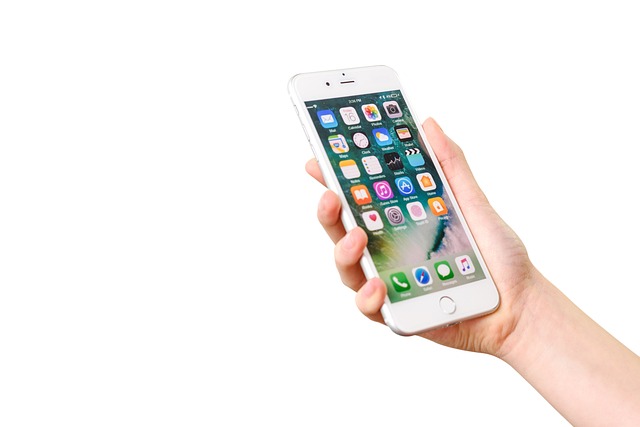
In 2024, the smartphone industry continues to evolve at an impressive pace, with new models boasting powerful features, advanced technologies, and sleek designs. This year has seen manufacturers pushing the boundaries in terms of processing power, camera performance, battery life, and overall user experience. Choosing the best smartphone can be a challenge, as consumers have a wide array of options that cater to different needs and preferences. This article will provide a detailed comparison of the top smartphones of 2024, focusing on the most prominent models and their standout features.
1. Apple iPhone 16 Pro Max
Apple has maintained its dominant position in the smartphone market with the release of the iPhone 16 Pro Max. This flagship model from Apple represents a significant leap in both hardware and software.
Key Features:
- Display: The iPhone 16 Pro Max comes with a 6.7-inch ProMotion OLED display, featuring a 120Hz refresh rate for smooth scrolling and gaming. The brightness has been enhanced, making it ideal for outdoor use.
- Processor: Powered by the A18 Bionic chip, the iPhone 16 Pro Max is one of the fastest smartphones on the market. It is designed for seamless multitasking and offers superior performance for gaming and video editing.
- Camera: Apple continues to focus on camera quality with a 48MP triple-lens rear camera system, including a new periscope telephoto lens with 10x optical zoom. The Night Mode and improved AI capabilities enhance low-light photography.
- Battery Life: The iPhone 16 Pro Max offers a substantial battery life, lasting up to 28 hours on a single charge with heavy use, making it one of the top performers in its category.
- Software: iOS 18 introduces new features like AI-powered widgets and enhanced privacy settings, along with deeper integration with the Apple ecosystem.
Pros:
- Unparalleled performance and speed.
- Top-notch camera with professional-level photography tools.
- Excellent battery life.
- Strong integration with other Apple products.
Cons:
- Premium price point.
- Limited customization options compared to Android phones.
2. Samsung Galaxy S24 Ultra
Samsung’s Galaxy S24 Ultra is a major contender in the premium smartphone market, and it continues to challenge Apple with innovative features and superior hardware.
Key Features:
- Display: The Galaxy S24 Ultra boasts a 6.8-inch Dynamic AMOLED 2X display with a 144Hz refresh rate, offering an ultra-smooth user experience. Its high resolution and color accuracy make it perfect for media consumption and gaming.
- Processor: Powered by the Qualcomm Snapdragon 8 Gen 3 processor, the S24 Ultra is designed for top-tier performance, handling intensive tasks with ease.
- Camera: The camera setup on the S24 Ultra includes a 200MP main sensor, making it one of the highest-resolution cameras available in 2024. It also features a 12MP ultrawide lens and dual telephoto lenses with 3x and 10x optical zoom.
- Battery Life: With a 5000mAh battery, the Galaxy S24 Ultra supports fast charging at 45W and wireless charging at 25W, ensuring you can get a full day’s use with minimal downtime.
- Software: Samsung’s One UI 6.0, based on Android 14, is packed with customization options, multitasking features, and Samsung-exclusive apps like DeX mode for turning your phone into a desktop-like experience.
Pros:
- Stunning display with a high refresh rate.
- Exceptional camera system with versatile zoom capabilities.
- Long battery life with fast charging.
- Highly customizable software.
Cons:
- Large and bulky design may not suit all users.
- Expensive compared to other Android phones.
3. Google Pixel 9 Pro
Google’s Pixel 9 Pro focuses on delivering the best software experience paired with a powerful AI-driven camera system. It is a favorite among photography enthusiasts and those who prefer a clean Android experience.
Key Features:
- Display: The Pixel 9 Pro comes with a 6.7-inch OLED display with a 120Hz refresh rate, ensuring smooth interactions and vivid colors.
- Processor: The phone is powered by Google’s own Tensor G3 chipset, optimized for AI-driven tasks, especially in photography and speech recognition.
- Camera: The Pixel 9 Pro features a 50MP main camera, a 12MP ultrawide lens, and a 48MP telephoto lens with 5x optical zoom. Its computational photography capabilities, such as Magic Eraser and Real Tone, continue to set it apart.
- Battery Life: The 4800mAh battery is slightly smaller than its competitors but still offers excellent longevity, especially with Google’s adaptive battery management features.
- Software: The Pixel 9 Pro runs Android 14 with exclusive features like Pixel Call Assist and enhanced real-time translation, showcasing Google’s focus on AI and machine learning.
Pros:
- Best-in-class camera performance, particularly for low-light conditions.
- Clean, bloat-free Android experience.
- AI-driven features enhance user experience.
- Regular and timely software updates directly from Google.
Cons:
- No expandable storage option.
- Battery life could be better compared to rivals.
4. OnePlus 12 Pro
OnePlus has consistently produced high-performance devices at competitive prices, and the OnePlus 12 Pro is no exception. It targets users who want flagship features without the premium price tag of more established brands.
Key Features:
- Display: The OnePlus 12 Pro offers a 6.7-inch Fluid AMOLED display with a 120Hz refresh rate, ensuring smooth and responsive interaction.
- Processor: It is powered by the Qualcomm Snapdragon 8 Gen 3, offering flagship-level performance, capable of handling gaming, media editing, and multitasking with ease.
- Camera: The camera system on the OnePlus 12 Pro includes a 50MP main sensor, a 48MP ultrawide lens, and a 32MP telephoto lens with 3x optical zoom, delivering great versatility.
- Battery Life: The 5000mAh battery supports 100W fast charging, allowing users to fully charge the phone in just under 30 minutes, which is a major selling point.
- Software: Running OxygenOS 14, OnePlus’ software is lightweight and offers many customization options while being based on Android 14.
Pros:
- Excellent performance and smooth software experience.
- Fast charging speeds.
- High-quality display with vibrant colors.
- Competitive pricing compared to other flagships.
Cons:
- Camera quality, while good, isn’t as advanced as top competitors.
- Lacks the same level of brand recognition and ecosystem support as Apple or Samsung.
5. Xiaomi 14 Ultra
Xiaomi’s 14 Ultra stands out as a powerful contender in 2024, offering premium features at a relatively lower price, appealing to budget-conscious users who don’t want to compromise on performance.
Key Features:
- Display: The Xiaomi 14 Ultra features a 6.73-inch LTPO AMOLED display with a 120Hz refresh rate and HDR10+ support, offering bright colors and sharp contrasts.
- Processor: Equipped with the Snapdragon 8 Gen 3 processor, the Xiaomi 14 Ultra ensures fast and reliable performance for demanding applications.
- Camera: The phone boasts a quad-camera setup, including a 108MP main sensor, 48MP ultrawide lens, 48MP telephoto lens with 5x zoom, and a dedicated macro camera.
- Battery Life: A 5000mAh battery with 120W fast charging ensures that the phone charges rapidly, making it a great option for power users.
- Software: MIUI 15, based on Android 14, offers a highly customizable user experience with various features, though it can be heavy on pre-installed apps.
Pros:
- Competitive pricing for flagship-level specs.
- Excellent camera performance, particularly for zoom and macro photography.
- Fast charging capabilities.
- Large, vibrant display.
Cons:
- MIUI software can be overwhelming with pre-installed apps.
- Heavier design compared to other phones in its class.




